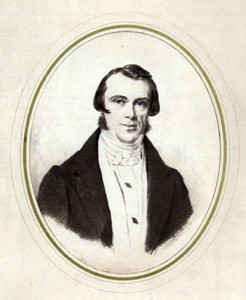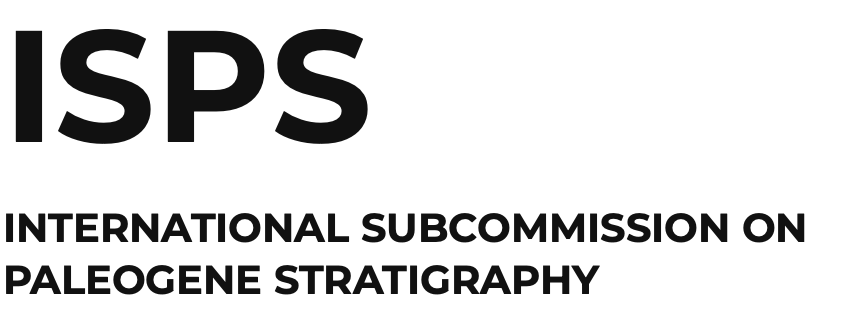Reasons for a name
The term “Paleogene” came in 1866, but its conceptual origins were much older, written in German. Contemporary British geologists were slow in recognising the idea of a lower Tertiary extending beyond Lyell’s Eocene, older than the Miocene.
Heinrich Georg Bronn from Heidelberg, born in 1800, was a prolific and precocious mind. Graduated at 21, professor at 22, at 24 he left Germany to travel to Switzerland, Italy, France and Austria and study Tertiary fossils, both from field collecting and in museums, and gathering information and opinions from the most distinguished palaeontologists then active in Southern Europe. By the end of the decade, he had prepared an articulated computation of the number of species common to the various Tertiary basins, comprising those described in Italian subapennine formations by Giambattista Brocchi and in the Paris Basin by Gérard Deshayes.

Completed in 1829 and published in 1831, Bronn’s statistics were expressed in terms of decimals of modern species existing among Tertiary fossils in each formation — a precursor of the work that Charles Lyell started after meeting Deshayes in 1830. In the intention of the author, the 1831 statistics were not yet regarded as sufficient to establish a firm subdivision of the Tertiary. However, after the publication of Lyell’s third volume of Principles of Geology, in 1833, the time came also for Bronn’s Lethaea geognostica, published from 1834 to 1838. His subdivision of the Tertiary, an alternative to Lyell’s epochs, came by merging formations with similar faunas into three big Molasse Gruppen, together forming the Mollasse Gebilde. The upper group comprised what was called Diluvium (the strata left by the last “catastrophe” that had struck the Earth) and the Recent Alluvium, or modern sediments. Bronn’s middle group would instead merge Lyell’s Miocene and Older Pliocene, whereas the lowest group comprised all Tertiary terrains below the Miocene.


Molluscs were still the standard fossils to date Tertiary formations in 1853, when Bronn’s lesson was picked up by Moritz Hörnes from Vienna, in Austria, director of the museum of natural history. Considering the impossibility to draw a clear demarcation between the Miocene and the Pliocene, as it was the case for one who studied formations of the Vienna Basin, Hörnes introduced the term Neogene as the sum of the two, corresponding to Molasse Gruppe II and Molasse III of Bronn (1834-1838, and later editions, as explained by Bergreen, 1998).

The circle was not complete until a name was found for the older tertiaries, comprising all formations underlying Hörnes’ Neogene. This finally took place in 1866, with the publication of the second edition of Lehrbuch der Geognosie by Karl Friederich Nauman, a geologist born in Dresden and teaching in Leipzig. Neatly formalised, following the reluctance of Hörnes to act, Neuman’s Paläogene comprised all Eocene and Oligocene formations (the Oligocene had been meanwhile introduced by Heinrich Beyrich, in 1854), testifying to a final compromise between the British (Lyelleian) and the German traditions.
Inasmuch as Hörnes has recently explained that by means of the collective name of Neogene he is referring only to the sharp boundary between the Eocene and the younger Tertiary strata, without the possibility of any further subdivision of these two main ‘stages’, this allows further subdivision of the Tertiary formations in the following manner:A. Palaeogene Tertiary
1. Eocene Formations
2. Oligocene Formations
B. Neogene Tertiary
3. Miocene Formations
4. Pliocene FormationsNeuman 1866; translation in Berggren 1998
In the second half of the century, the time was then ripe for a wider acceptance of the deeply-rooted German lesson: the highest geological award of the time, the Wollaston Medal, was conferred by the Geological Society of London to Heinrich Bronn in 1861, to Karl Nauman in 1868.

Learn more
Bergreen W.A. (1998) The Cenozoic era: Lyellian (chrono)stratigeraphy and nomenclatural reform at the millennium. In: Blundell D.j. & Scott A.C. (eds.). Lyell: the past is the key to the present. Geological Society, London. Special Pubblications 143, 111-132.
Brocchi G.B. (1814). Conchiologia Fossile Subappennina con osservazioni geologiche sugli Appennini e sul suolo adiacente. Milano: Stamperia Reale. Volume 1, 712 pp.; Volume 2, 477 pp.
Bronn H.G. (1831). Italiens Tertiär-Gebilde und deren organische Einschlüsse. Heidelberg: Gros. 176 pp.
Bronn H.G. (1834-1838). Lethaea geognostica oder Abbildungen und Beschreibungen der für die Gebirgs-Formationen bezeichnendsten Versteinerungen. Stuttgart: Schweizerbart. 544 pp.
Deshayes G.-P. (1824). Description des coquilles fossiles des environs de Paris. Paris. Volume 1, 392 pp.; Volume 2, 814 pp.
Hörnes M. (1853). Mitteilung an Prof. Bronn Gerichtet: Wien, 3. Okt., 1853. Neues Jahrbuch für Mineralogie, Geognosie, Geologie und Petrefaktenkunde Jahrgang 1853, pp. 806-810.
Lyell C. (1833). Principles of geology, being an attempt to explain the former changes of the Earth’s surface, by reference to causes now in operation. London: John Murray. Volume 3.
Nauman C.F. (1866-1872). Lehrbuch der Geognosie. 2nd edition, Leipzig: Engelmann, volume 3, 1-192 (1866), 193-352 (1868), 353-576 (1872).
On the web

